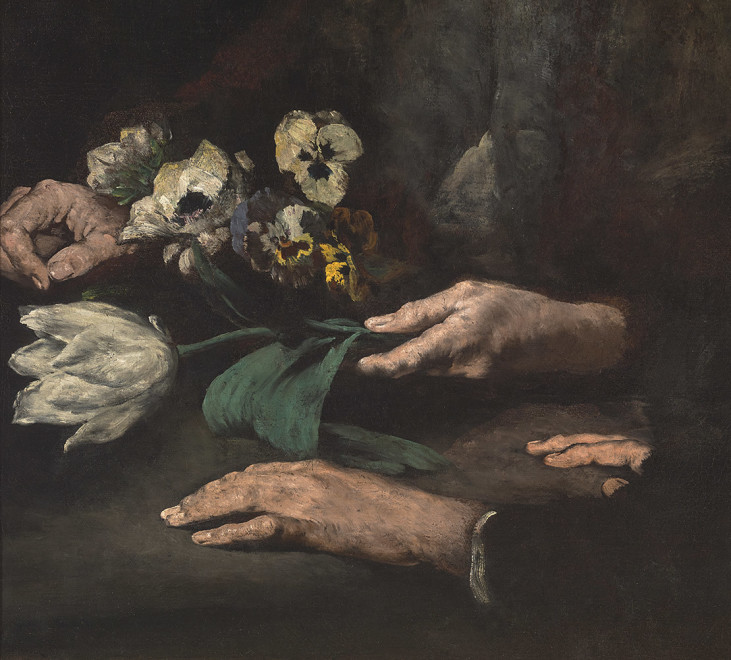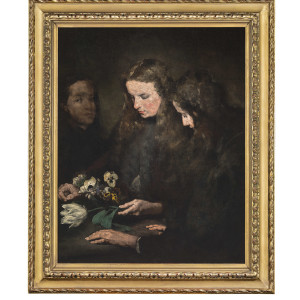La dernière pensée features a combination of Ribot’s most iconic subjects: portraiture and still lifes. Like many of his paintings, the final result is a contrast of lights and darks.
Provenance
Private collection, Netherlands, ca 1970sThence by descent
Exhibited
Paris, Bernheim Jeune, Exposition Ribot, 2-8 February 1911, no. 15Catalogue note
La dernière pensée features a combination of Ribot’s most iconic subjects: portraiture and still lifes. Like many of his paintings, the final result is a contrast of lights and darks. Here, he uses a predominantly somber, almost black background and a similar palette to depict the clothing and hair of the three young women. This allows an accentuation of the models’ features, their hands and the flowers, resulting in the only touch points of light in the entire composition. Like many artists at the time, Ribot was strongly influenced by seventeenth century Spanish painting, especially the work of Jusepe de Ribera, whose trademark style was also the use of contrasting lights and darks.
Members of Ribot’s family frequently served as his models, and he would often focus on their faces and especially the details of their hands. This is true in our painting where the title, La dernière pensée, refers to the white tulip being the final touch on this springtime assortment of pansies and anemones, and where the entwining of the hands and the flowers morph into one harmonious bouquet.








